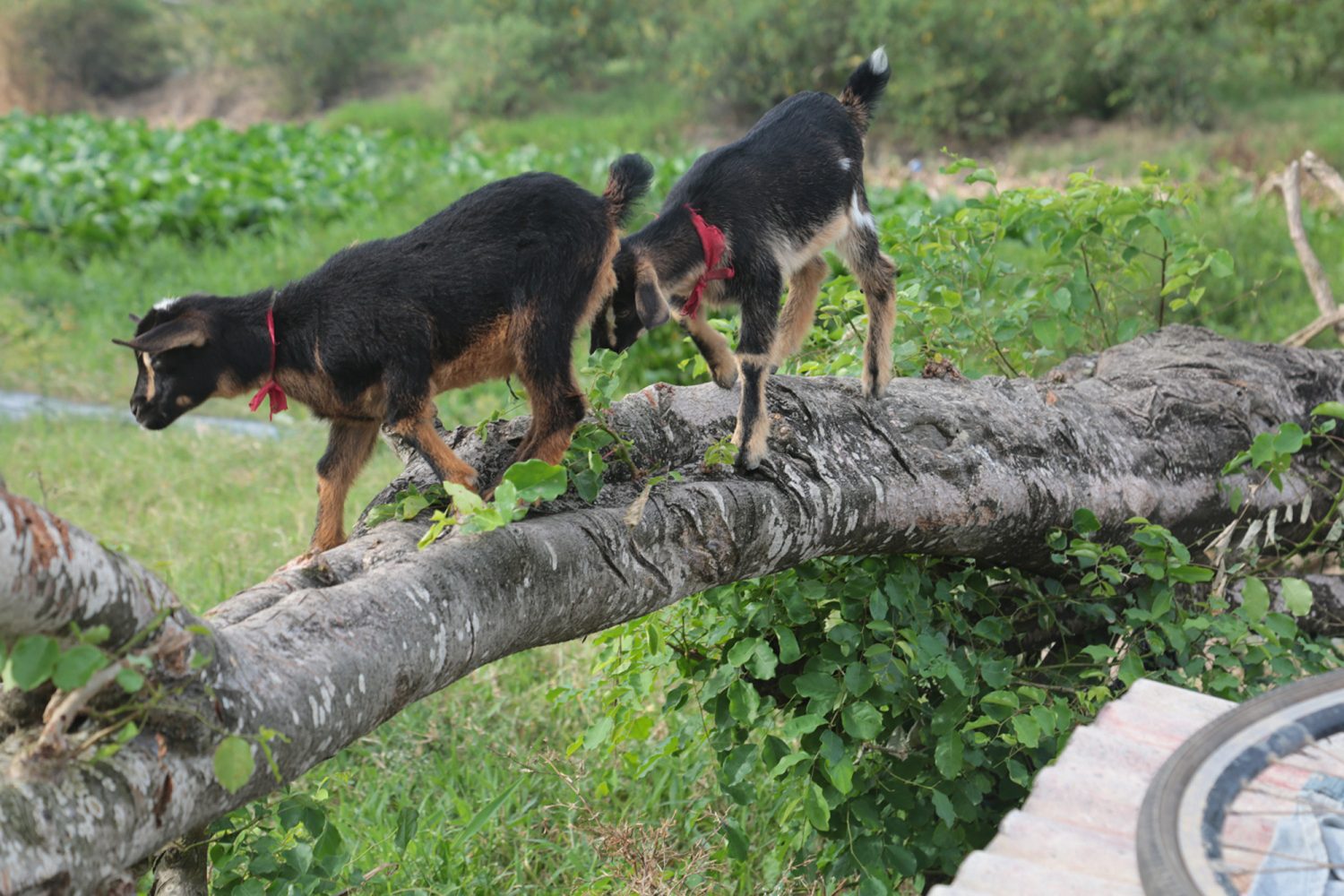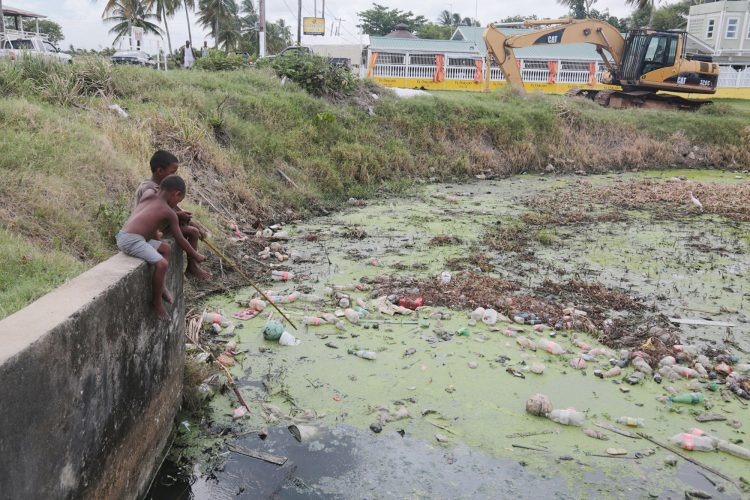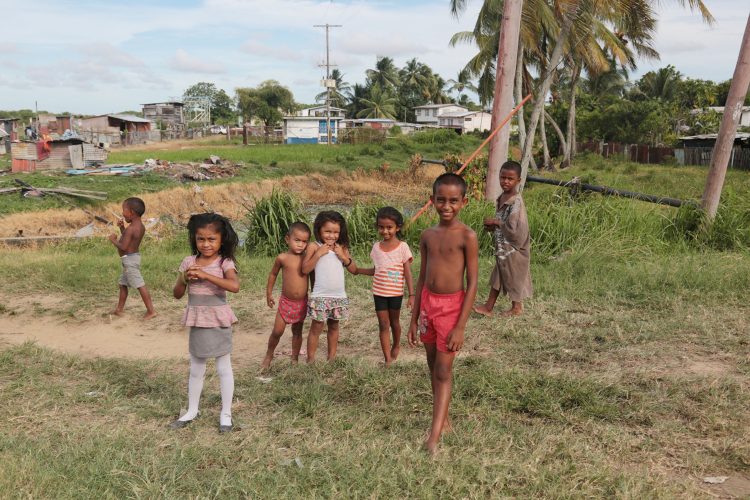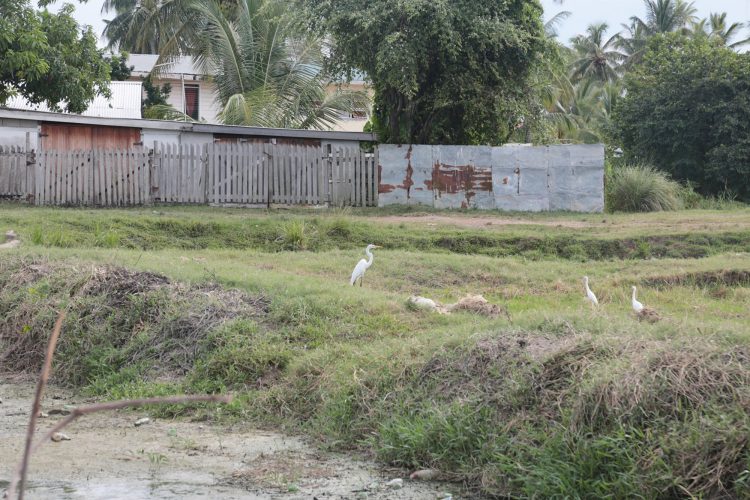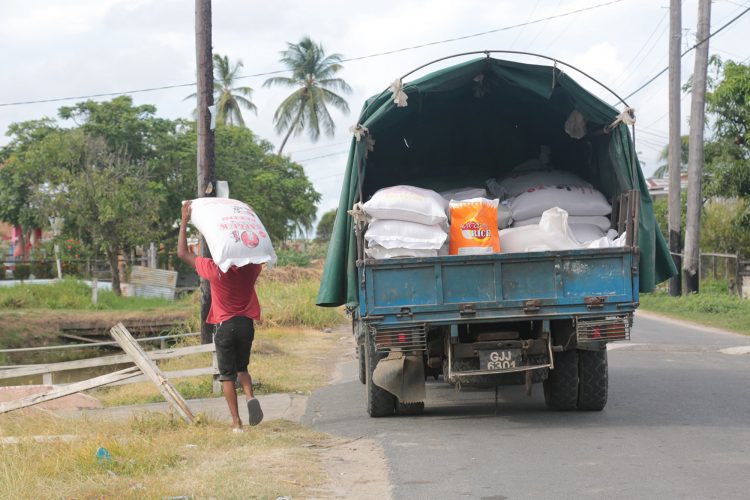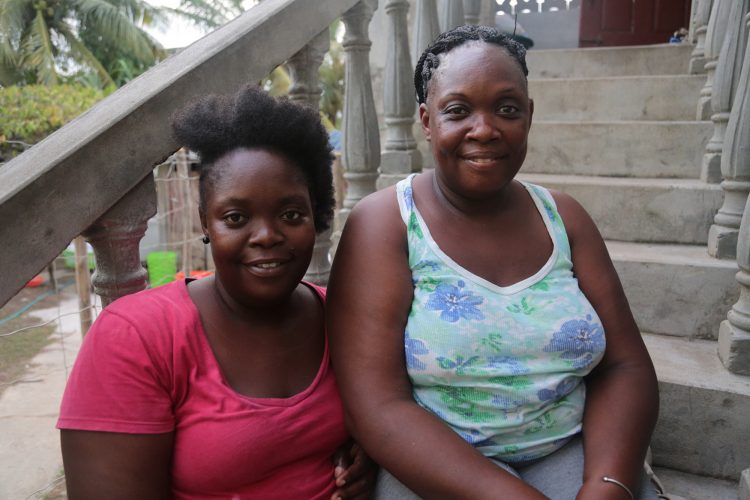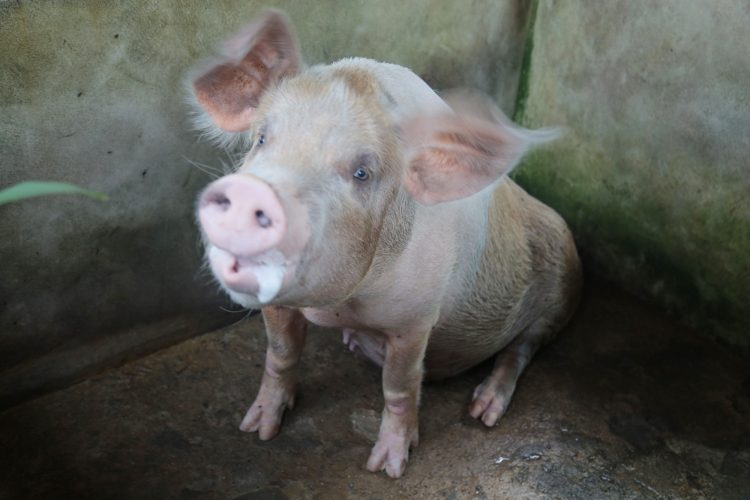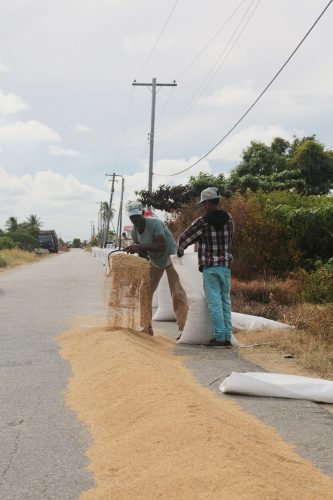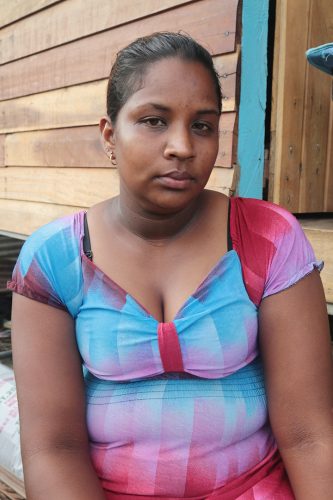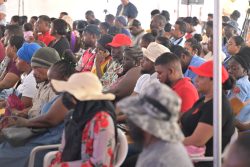The village of Crane is believed to have been in existence since the late 1800s or early 1900s and is home to more than 3,000 people. Crane is situated approximately a mile away from the Vreed-en-Hoop Police Station, a ten-minute drive.
Crane is divided into three sections: the housing scheme, the new scheme and the squatting area.
When I arrived, the village appeared to be asleep except for the cranes, king fisher, pigeons, hawks and doves scouting the rice fields and nearby drains. But soon, the place began to stir; people looked out to see the stranger intruding their village, men cycled by with groceries, a truck driver skillfully fetched a bag of rice on his shoulder into a nearby shop and through one of the streets, men hurriedly scooped paddy that had been left to dry along the road into bags.
At one junction, there was the sore sight of a stagnant garbage and weed-filled trench, a few houses stood out as they were constructed too close to each other that there was hardly space left for one to walk between them; fowls scratched in the dirt clucking among themselves, goats grazed in the grass and half-naked children eyed me curiously.
A couple sat under a tree with their young children and behind them swinging from a parked and seemingly inoperable excavator were more children. The man sitting under the tree was Marlon McKinnon, a father of eight who once resided in Number One Canal but settled in Crane 11 years ago after arriving in search of work. According to him, after the passing of his mother, he had no reason to stay and moved to Crane to work on the rice farms. After managing to get some materials he built his growing family a home.
According to McKinnon, he and his wife applied for land at the Central Housing and Planning Authority back in 2010 but have received no response. He added that it was rumoured that officials from Ministry of Housing had said that they could stay where they were and that one day the area would be regularized. However, the plot of land can only accommodate three families and at present nine families are squatting there, which means the remaining six would be homeless should this happen.
Asked whether he was affected by the nearby canal, he said no adding that the Vreed-en-Hoop Neighbourhood Democratic Council (NDC) had recently sprayed the trench.
Nearby, Mala Ramphal sat by her door looking out as her children played out front and her husband, Safraz Ali, was busy cutting pieces of Gilbaka for dinner.
Ramphal was four years old when she first arrived in Crane with her parents and remained until she was ten before leaving and returning again to raise her family.
Ali hails from the Corentyne and had left there in search of work when he met Ramphal. Their union has produced three children who currently attend the Crane Nursery and Primary schools.
The village once had two nursery schools, one at the front half of the village and the other in the latter half but one was closed recently because the floor deteriorated. This, Ali said, made things on his and other families living at the back difficult as they have to take their children to the other nursery school and because of the distance away, they are unable to walk. He now has to find an additional $1,000 a week for transportation. He was peeved that instead of repairing the floor, the authorities closed the school.
Ali is discomfited by the canal. He argued that all the NDC did was spray the corners of the canal but that does nothing to the roots or the foliage growing in the middle. The canal, he said, has become a habitat for reptiles including caimans and anacondas. He recalled nights when he would be awakened by loud noises from his ducks as they were being preyed on by the anacondas; he eventually sold them out. He said they would see caimans but have never been bothered by any.
He now has a few goats, but this too spells trouble. “It got these men them [stray catchers] does be going around catching people animals. I understand if they catching them on the public roads, but they can’t be coming in the streets them catching we animals. Is $7,000 a head and when they got to keep them overnight, is $400 dollars more,” lamented Ali. He has had run-ins with the stray catchers and because he did not have ready cash at the time to pay for the release of his animals, he ended up having to pay $30,000.
Ali also applied for land in 2010 also and noted that if he had not done “a lot of running around to get it,” he would still be without land today. A lot has been allocated to him in Lust-en-Rust, Number One Canal, but because the area has no electricity or potable water, the family has delayed moving. Living in Crane, he said, is more convenient as they have access to water with the Guyana Water Inc Pump Station situated nearby. Prior to now his children studied at night by way of lamplight, but not wanting to see them straining their eyes, he bought a solar panel which provides their home with electricity.
Apart from better cleaning of the canal, Ali wishes that there can be an outpost in the area as there are robberies, “a lot of drugs, fighting… and when you call the police, they taking they own sweet time to come.”
Jacquelyne Blackett sat on her step in Crane New Scheme plaiting her daughter Onecia’s hair. Blackett’s bright smile welcomed me warmly as she pointed out her new soursop trees in her fruit/cash crop filled yard. But there were hints of sadness as she recalled that her beloved husband Gregory Blackett, who did the farming, passed away six months ago. Since his passing her youngest son has taken up the planting.
She noted that when she first arrived her with her husband and children from Pouderoyen they only had water, no electricity. She came to live in the second phase of Crane. It is her understanding the first part of Crane was built by self-help, where its residents took turns building each other’s houses. Phase two was said to be all crabwood trees before the housing scheme began in 1992.
“When we first came here, I didn’t like it. I used to cry. The road was a muddy track and in the afternoons sandflies used to bite,” said Onecia, who was a teenager at the time.
Her mom, however, saw it differently. “I found it nice here. I could see the ocean from my verandah…. My husband did planting: pak choi, suckers [cayenne bananas], sweet peppers, mari peppers, Suriname thyme….”
Under her house in a wooden coop, fowls peeked out between the creases. At the back of her yard there were pig pens with a year-old pig and a few piglets. Blackett said she usually reared more and the pig in the pen will be the Christmas’ special this year. Her mention of Christmas sent Blackett and her daughter down memory lane.
“The celebration starts at Diwali, the lights, blasting of music, hanging out late at nights, lighting squibs and fireworks and bush cooks,” said Onecia. This leads into Christmas carols, fairy lights and the baking of cakes, breads and chicken. “People don’t sleep Christmas Eve night. You smelling cakes and pepperpot all around you. Usually everybody waiting on the pepperpot and the stuffed baked chicken,” she said making reference to her mother’s famous baked chicken. Blackett blushed, but added that one of her sons always says that even when he marries, he will be coming back home for Christmas, especially for her baked chicken. Though Christmas is an anticipated holiday for the Blacketts, this one will be the first without the head of the home, and will now be a holiday laced with sadness.
July to September in Crane is crab season and attracts villagers and visitors who all want their share of this tasty treat.
Asked about the petty robberies that were mentioned earlier, Blackett said they did occur but on rare occasions. She boasted that the people in Crane are good neighbours who watch each other’s backs.
Life there, she concluded, is convenient with schools nearby, shops, access to potable water, electricity, internet and an almost 24-hour transportation service.
